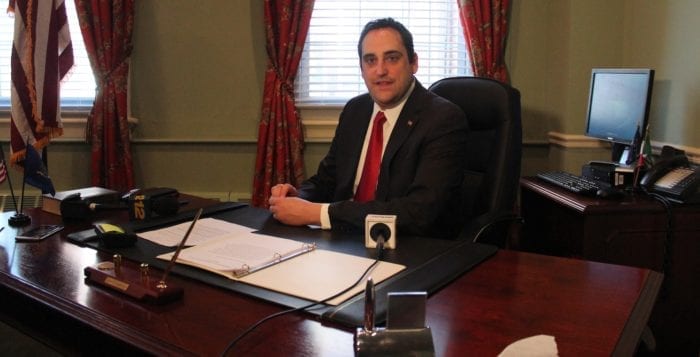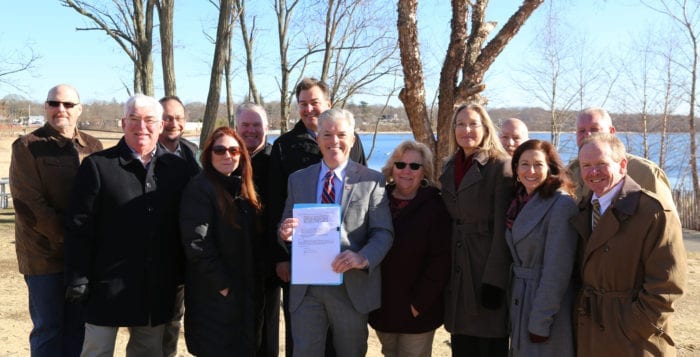By Kevin Redding
A new, 52-unit apartment complex being built in Port Jefferson Village this spring just got a financial boost from the town.
The $10.8 million project, which will be called Overbay, was recently approved for a package of economic incentives that includes sales tax exemption and payments in lieu of taxes, or PILOTs, by the Town of Brookhaven Industrial Development Agency.
During a Jan. 10 meeting, members of the IDA board announced the approval for the Hauppauge-based development company, The Northwind Group, to construct the 54,000-square-foot “nautical-style” apartment building on the now-vacant site of the former Islander Boat Center building on West Broadway, which was demolished by the company in February. The IDA received Northwind’s application in 2015.
Overbay would stand as the third new apartment complex built in the village in recent years. With the IDA’s assistance, it is expected to have considerably lower rent costs than the others in the area, according to Lisa Mulligan, IDA chief executive officer.
Prices for the units have not been established yet. When Northwind managing member Jim Tsunis received approval by the village building and planning department for the apartments in 2015, he estimated rents would range between $1,800 and $2,200 a month, Mulligan said.
“Just in general, the need for affordable rental housing in the Town of Brookhaven is well documented and significant, so our IDA board of directors felt this was a project that would help fill that need,” Mulligan said, adding Overbay will be especially helpful for college students and seniors. “The clientele is anybody who is looking to move out of their home and into something that’s a little easier to upkeep. There aren’t enough legal rentals that are [affordable]. A development like this one provides that option.”
Frederick Braun, chairman of the IDA, spoke of Overbay’s benefits in a press release.
“This project will bring much-needed rental housing to an area near to Stony Brook University and Port Jefferson’s Mather and St. Charles hospitals and spur additional spending in the village and the town,” he said.
The complex is also expected to create two permanent jobs — Mulligan speculated perhaps a rental agent and a building superintendent — and 150 construction jobs over a two-year period. IDA financial incentive agreements typically require the creation of jobs, both permanent and construction related.
Tsunis said the incentives will help Northwind offset the Islander Boat Center building’s $200,000 demolition costs.
“It’s going to enable me to spend more money on the building, so the end result is there will be a better product for the residents of Port Jefferson,” Tsunis said. “It’ll definitely bring people into the downtown area that will spend money at the local shops.”
Community response has long been mixed on the project, even within the village board.
Overbay’s eastern neighbor, The Shipyard apartment complex, which was constructed by Tritec Development Group, opened in January. That project secured a financial assistance package from the Suffolk County IDA and will make PILOT payments to the village for 15 years in lieu of property taxes.
The influx of new village residents without the benefit of increased property tax revenue has been a point of contention for property owners.
“I think it’s a real disaster for the village that they were able to get this financial assistance,” 30-year village resident Molly Mason said in a previous interview, referring to The Shipyard. “It’s like we’re giving away the store.”
Village Mayor Margot Garant and the board of trustees previously opposed the financial assistance granted to Tritec.




















